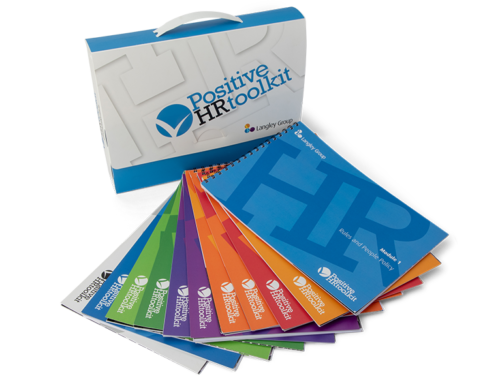
Helping people realise their strengths enables you to get the best from them whatever the context. Whether you are a coach, leader, hiring manager, teacher or parent, strengths are natural, authentic resources that people can draw on to achieve higher performance, find more fulfilment and reach their potential.
There are many ways to discover people’s strengths and bring strengths to life in workplaces, classrooms and coaching.
In previous articles we outlined formal methods for identifying and developing strengths based on the research, and highlighted our favourite tool, Strengths Profile (formerly R2 Strengths Profiler).
In this article I’ll introduce you to some of the informal strengths-identification methods you can use to complement formal assessment, provide flexible alternatives or introduce strengths more broadly and to wider audiences.
Strengthspotting
Strengths can be identified in people through listening, observation and open-ended questioning, a technique known as ‘strengthspotting’ (Linley, 2008; Linley and Minhas, 2011).
Alex Linley explains that strengths energise and enable us to do our best. He defines a strength as: “a pre-existing capacity for a particular way of behaving, thinking, or feeling that is authentic and energising to the user, and enables optimal functioning, development and performance” (2008). By spotting the energy behind strengths and how those energy levels change, we pick up vital cues about our own and other people’s strengths. When you notice these signs over time, patterns emerge.
Signs that people are talking about their strengths include higher energy level and absorption (do they appear vital and passionate, relaxed yet focused?); use of certain phrases (such as “I love it when…” or “it just fits…”); ease of visualisation (with rich descriptions), or references to childhood memories (strengths often have roots in our early life and aspirations). In essence, people appear far more positive, lively and integrated when talking about their strengths than when talking about their weaknesses. (You can read a full list of strengthspotting tips in our ebook.)
Whether you are getting to know a client or student, building a relationship with a team member, or interviewing a candidate for a role, ask people what they enjoy doing. Your ability to spot strengths may give you more accurate insights than what people actually say. For example, if a job candidate says they are good at a key criterion yet you are not observing the energy levels and authenticity associated with a strength, you might want to verify this further.
Where appropriate, use these opportunities to point out what you notice and give feedback. People love to have their strengths recognised and affirmed, may be surprised to hear such revealing insights, and will find this technique really useful to tap into their strengths day to day.
Strengths Cards
Whether you are working one-on-one with people, in groups, workplaces, classrooms or families, strengths cards are a wonderful tool to start a conversation (Biswas-Diener, 2010).
Cards with imagery and brief definitions of different strengths can provide the stimulus people need to reflect on their strengths and share examples. We use strengths cards a lot in training and have a range of games we play to make learning interactive and fun.
For example, we play Strengths Poker in groups, using a set of Strengths Cards. In this game, the aim for each individual is gathering a handful of cards that most closely resembles their strengths by trading cards with other players. We start by dealing seven cards to each player and leaving the remaining face down on the table. The player to the left of the dealer starts by choosing a card in their hand they do not want and would like to trade. Other players offer cards to swap or swap a card in the pile on the table. Each player takes it in turn and after 10 minutes, all players lay out their cards and describe their strengths to the group.
Strengths Stories
Asking people to share stories about their strengths is another informal way to surface realised or unrealised strengths.
We find that when people share their strengths stories with others, the results are powerful. When people can articulate their strengths and learn about other people’s strengths, they develop a far deeper appreciation of what they and others contribute. Individual strengths come alive in different contexts, so listening to and telling strengths stories reveals the many distinct and creative ways people’s strengths combine and come into play.
You can invite people to share their strengths stories by describing a significant accomplishment and how they used their strengths to achieve success. Find out what they learned about their strengths and if any emerged through the experience that surprised them. How do they use those strengths now and how can they take them to the next level to achieve their future goals?
In workshops, we often ask individuals to talk about their strengths profiles, how they combine different strengths, and what strategies they will apply to improve their own performance and collaborate as a team.
Informal Strengths Assessments (ISAs)
It is possible to create individual strengths assessments (ISAs), semi-structured yet free-flowing sets of questions to elicit strengths and weaknesses (Linley, 2008). Combine these in-person listening exercises with strength-spotting to further validate what you hear and follow-up with additional questions.
Questions to elicit strengths include: What makes for a really good day for you? Tell me about the best day you remember having? When you are at your best, what are you doing? What do you gain most energy from? What sorts of activities?
Include questions to understand weaknesses and what drains the person, such as: What are the activities you really dislike? Why? What activities drain you when you have to do them? Has it always been this way?
These conversations are ideally free-flowing, rather than scripted. Even if someone is unclear what their strengths are at the start of the conversation (which is common), they will emerge with a far richer and more in-depth understanding. Typically you will be able to identify key themes and directions to further explore their strengths.
Strengths-Based Interviewing
Identifying specific strengths in someone can be done through a more structured interview process (Linley, 2008). This is an ideal approach when recruiting or selecting people.
You may already be using a formal strengths tool or framework in the workplace, so these interviews can be used to discover whether people possess the right strengths or are likely to shine in a particular role. Start with general strengths questions, then hone in with a set of questions about each targeted strength. Tally up results if you want to compare individuals. Try not to be too prescriptive, as each person uses their strengths in different ways. You can follow up with formal assessments for top candidates.
A strengths approach has been found to generate more accurate responses than traditional competency-based interviewing. People tend to be a better fit for the role, and continue to be motivated, engaged and high performing. Even if they didn’t possess the necessary skills or competencies when recruited, strengths in these areas will enable them to develop. Aviva used strengths-based interviewing and hiring practices to attract and recruit customer-facing employees, experiencing 39% reduction in cost per hire, 14.5% greater customer satisfaction and 50% less turnover in the first year (Capp, 2009).
Strengths Exercises
There are many exercises to help individuals and groups discover their strengths. One of the most research-based interventions is the Reflected Best-Self Exercise (Roberts et al., 2005). Created by The Center for Positive Organisational Scholarship at the University of Michigan, this feedback activity involves surveying others about your strengths; analysing the feedback for strengths, weaknesses, enablers and blockers; constructing a best-self portrait, and developing an action plan to develop yourself.
Designed to help individuals expand their understanding of who they are and what they do when they are at their best, this unique process gives people a perspective on how their strengths positively impact the people around them. It also helps build closer bonds.
The goal is to ask between 15 to 20 people to write stories about you at your best. Sometimes we underestimate or minimise our own strengths, so this feedback will contain illuminating details. Best-self stories capture things that people say or do in critical times as well as everyday routines that make a real difference to others. Many of these stories may have previously been unacknowledged. We encourage people to keep the dialogue going, and many people involved in the feedback process feel inspired to share the stories publically or undertake the exercise themselves.
Whichever method you use to bring strengths to life with the people you coach, teach or lead, make sure you understand the research and how to help people use their strengths effectively. Using an evidence-based tool such as Strengths Profile is a great next step for individuals and teams.
We deliver professional certification for those who want to learn more and build a strengths approach through leadership, people and culture programmes.
References:
Biswas-Diener, R. (2010). Practicing Positive Psychology Coaching: Assessment, activities and strategies for success. Wiley & Sons.
Capp (2012). Performance Manager: Managing strengths to deliver better performance through your people. White paper.
Linley, P.A. (2008). Average to A+: Realising Strengths in Yourself and Others. Coventry, UK: CAPP Press.
Linley, A., Willars, J. & Biswas-Diener, R. (2010). The Strengths Book. Coventry, England: CAPP Press.
Linley, P.A. and Minhas, G., (2011). The strengths of the strengthspotter: Individual characteristics associated with the identification of strengths in others. International Coaching Psychology Review, 6(1), pp.6-14.
Roberts, L.M., Dutton, J.E., Spreitzer, G.M., Heaphy, E.D. and Quinn, R.E., (2005). Composing the reflected best-self portrait: Building pathways for becoming extraordinary in work organizations. Academy of Management Review, 30(4), pp.712-736.
To learn more join Learn with Sue for eBooks on topics such as Harnessing Strengths at Work, 7 Ways to Apply Positive Psychology, 10 Brain Friendly Habits and How to Lead with the Brain at Work. Plus a range of tools to help yourself and others including questionnaires, values cards, posters and more.






